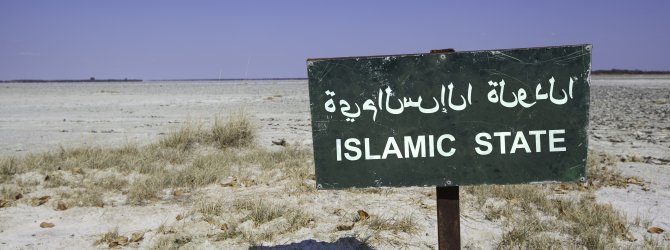-
Representation is Everything in IS Social Media War
Representation is Everything in IS Social Media War

As news of Islamic State (IS, also referred to across the WANA region as Daesh) advances were trumpeted on Twitter, the world watched as, online and in real time, IS took over major Iraqi cities and resources, such as the Mosul dam. Social media, championed as a force behind the Arab Spring, suddenly became a harbinger of doom. IS’s sophisticated use of social media was detailed in “How ISIS Games Twitter”, which documented how IS followers cunning manipulated Twitter using the app ‘The Dawn of Glad Tidings’ to increase their presence online.
Recent events in Iraq prompted me to consider, does use of social media increase our understanding of events – or subvert it? And, can it amplify violence? I believe the answer to the latter question is yes.
Social media theorists can be broadly put into two camps – the social media optimists, think Clay Shirky, and the pessimists, a la Morozov’s Net Delusion. In a 2011 Foreign Affairs article, Shirky writes “[t]he potential of social media lies mainly in their support of civil society and the public sphere”. Shirky’s social media is distinctly on the side of the “the people”. But what happens when that technology is not being used by the “right people.”
Now social media seem to be facilitating what one theorist has described as the “democratization of violence”. Think beheading videos, the Syrian fighter eating a man’s heart. If people are depraved enough to have done it, it seems that its somewhere out there on the web, on the deep web (the web that is inaccessible via search engines), but more and more often, in plain sight.
It’s not new that terrorist groups are using this technology. In 2010 I researched how Jemaah Islamiyah, the Indonesian terrorist group responsible for the Bali Bombings and other attacks, used advanced mobile phone technology and the internet. They employed advanced mobile phone technology to live stream a terrorist attack in what can be described as suicide streamed. Al Qaeda has an advanced media unit, and the Taliban is doing it too (though, as recently demonstrated, not always in the most sophisticated manner, when one Taliban fighter forgot to disable his location on Twitter.)
So what can we take from this. Certainly that we should shy away from arguments about social media entirely being a force for good, or the opposite. Social media isn’t inherently anything. It’s ambivalent. It’s a vessel, and it can be used by protesters, revolutionaries, terrorists, online bullies and governments alike, for purposes altruistic, violent or banal. Perhaps non-governmental organisations are quicker to adopt new media technology, and governments more slow to act (though they are usually the ones putting down the IT infrastructure in the first place). Once we get past simple descriptions of social media as entirely ‘good’ or wholly ‘bad,’ we might be getting closer to something accurate.
Social media seems to distort our understanding of events. Something about the immediacy, and the rawness of posts, screams “I’m real. Share me. Repost. Retweet.” But veracity – the accuracy of the tweet or Facebook post– can get lost in transmission. I’ll provide you with an example – from Syria. This image of an “orphaned Syrian boy” was retweeted by Syrian opposition leader Ahmed Jarba. It was then uncovered that far from detailing the reality of the Syrian civil war it was a photo in a project by Saudi Arabian photographer, Abdul Aziz Al-Otaibi. The dead boy was revealed to be very much alive, Al-Otaibi’s nephew, and the graves also fake. This didn’t stop the image from attaining mimetic velocity as it spread around the internet, irrespective of if the potential effects – negative or positive - of its reproduction.
So, it can be hard to ascertain the origin of an image or footage. However whether something is true or not does not limit its mimetic potential. Online, in the world of social media, representation is king. “Representation often exceeds meaning, and vica versa,” academic Gilbert writes. Gilbert was writing about viral Hitler Downfall videos, but his point is as relevant to social media. On social media meaning is sometimes subsumed by representation.
Social media certainly seems like a force multiplier. Think the ice bucket campaign. But also think IS’s chilling tweets. It accelerates, amplifies. But it doesn’t necessarily bring us true reportage. It distorts.
What can we expect next for IS? Certainly more gruesome content. But their tweets will not be without contestation. Muslims across the world have denounced them, and using their own viral campaigns to fight back, the #NotInMyName campaign is one example. Add to these, the tweets from Muslims who understandably feel like they have nothing to apologise for. Twitter is a battlefield, and the digital “fog of war” doesn’t seem like it will lift anytime soon.

